
Joanna of Bourbon was Queen of France by marriage to King Charles V. She acted as his political adviser and was appointed potential regent in case of a minor regency.
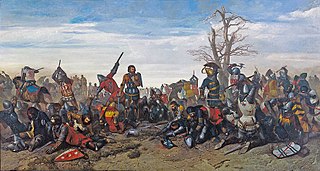
The Combat of the Thirty, occurring on 26 March 1351, was an episode in the Breton War of Succession fought to determine who would rule the Duchy of Brittany. It was an arranged fight between selected combatants from both sides of the conflict, fought at a site midway between the Breton castles of Josselin and Ploërmel among 30 champions, knights, and squires on each side. The challenge was issued by Jean de Beaumanoir, a captain of Charles of Blois supported by King Philip VI of France, to Robert Bemborough, a captain of Jean de Montfort supported by Edward III of England.
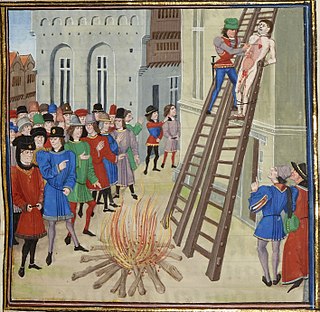
Froissart's Chronicles are a prose history of the Hundred Years' War written in the 14th century by Jean Froissart. The Chronicles open with the events leading up to the deposition of Edward II in 1327, and cover the period up to 1400, recounting events in western Europe, mainly in England, France, Scotland, the Low Countries and the Iberian Peninsula, although at times also mentioning other countries and regions such as Italy, Germany, Ireland, the Balkans, Cyprus, Turkey and North Africa.
Admiral of France is a French title of honour. It is the naval equivalent of Marshal of France and was one of the Great Officers of the Crown of France.

Marie de Berry was suo jure Duchess of Auvergne and Countess of Montpensier in 1416–1434. She was the daughter of John, Duke of Berry, and Joanna of Armagnac. She was married three times. She acted as administrator of the Duchy of Bourbon for her third spouse John I, Duke of Bourbon, during his imprisonment in England after he was captured following the French defeat at the Battle of Agincourt in 1415, until 1434.
Philippe Mouskes was the author of a rhymed chronicle that draws on the history of the Franks and France, from the origins until 1242.

The Bal des Ardents or the Bal des Sauvages, was a masquerade ball held on 28 January 1393 in Paris, France, at which King Charles VI performed in a dance with five members of the French nobility. Four of the dancers were killed in a fire caused by a torch brought in by Louis I, Duke of Orléans, the king's brother.
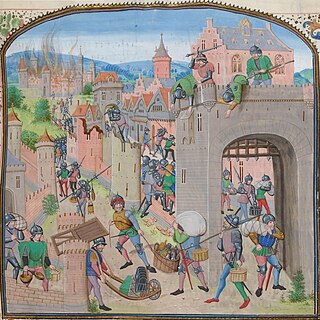
Hagre l'Escot was a Scottish mercenary captain during the Hundred Years War.

Francois Hennequin, was a mercenary captain during the Hundred Years War.

Naudon de Bageran was a mercenary captain during the Hundred Years War.

Robert Birkhead (Briquet) was a mercenary captain during the Hundred Years War.

John Creswey was an English mercenary captain during the Hundred Years War.

Aymon of Ortinge, also known as Amanieu d'Ortigue or Amanieu de l'Artigue, was a French mercenary captain during the Hundred Years' War. His story is mentioned in the Chronicles of Froissart.
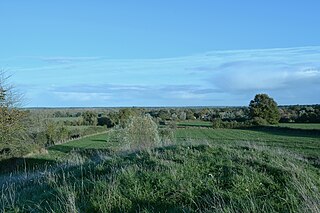
Belleperche was a castle, now destroyed, located in the current town of Bagneux (Allier). It was the seat of one of the castellany of Bourbonnais.
Bernard de Wisk was a mercenary captain and sometime brigand of the Hundred Years War.

Bour de Breteuil was a mercenary captain of the Hundred Years War.

Bour Camus, or Camus Bour Lesparre, also known as Camus the Bastard was a mercenary captain during the Hundred Years War. He was of Navarrese or Gascon origin.

Bertucat d'Albret was a medieval mercenary leader of a bandit army in the Hundred Years' War.
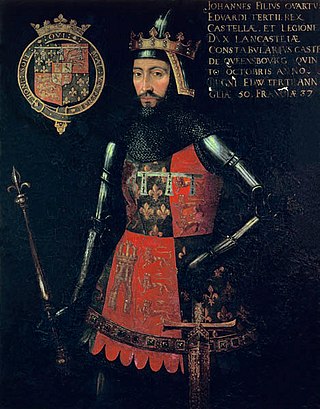
John of Gaunt's chevauchée of 1373 was an English military raid at the end of the second period of the Hundred Years' War by John of Gaunt, Duke of Lancaster, from his departure from Calais in August 1373 to his arrival at Bordeaux at the end of December 1373.

Louis de Laval was a French nobleman, soldier, politician and bibliophile.










